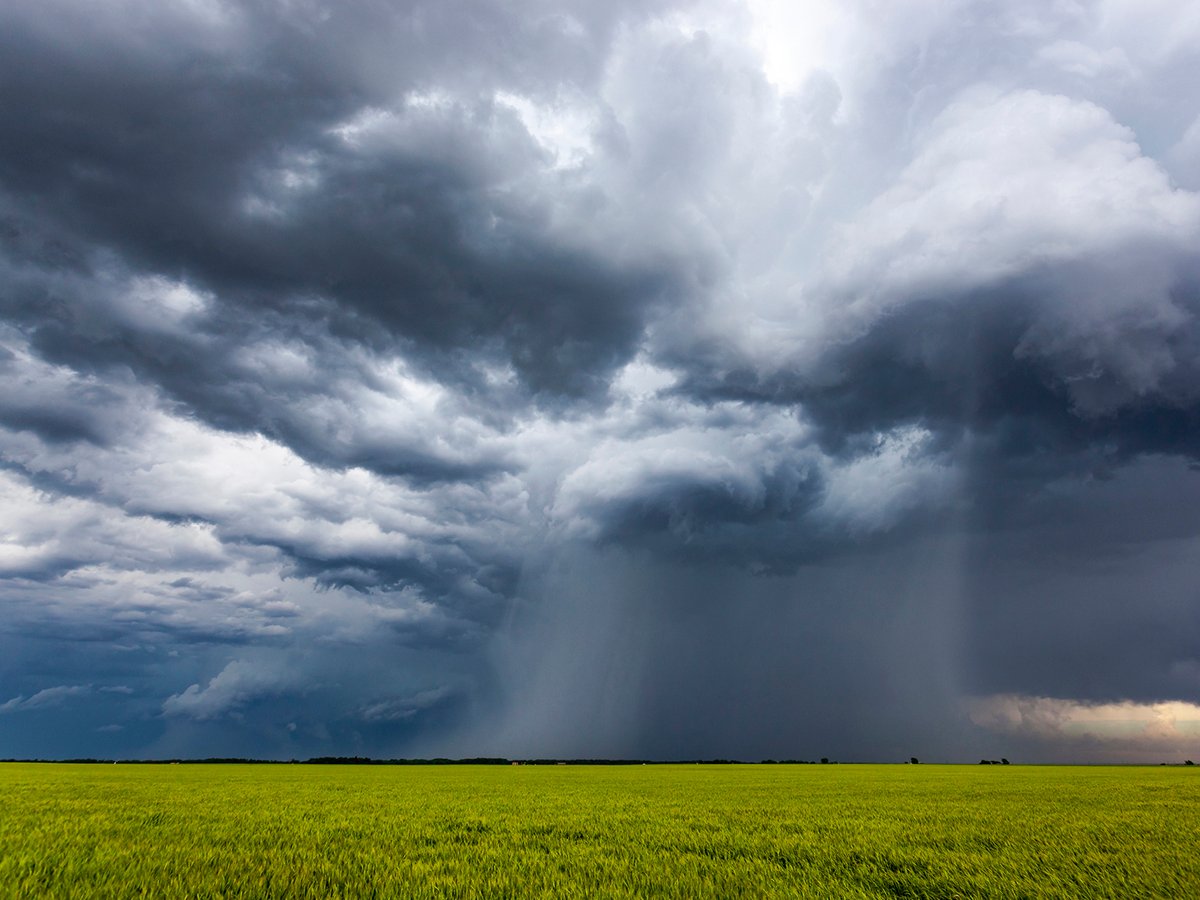Empty barns dot the prairie landscape. Some are dilapidated; others remain usable.
An entrepreneur from Waterloo, Ont., says he has found a way to put those barns into profitable service.
Empty haylofts can be used for raising pigeons, said Arlan Galbraith, founder and owner of Pigeon King International.
Galbraith contracts out the raising of breeding pigeons, mainly homing pigeons and high-flying tumblers.
Some people who are familiar with the pigeon business recommend caution, but Galbraith said there is great potential in pigeon production.
Read Also

Extreme rain increases as planet warms
In this issue, we are going to wrap up our look at extreme rainfall by examining the different weather patterns that tend to be associated with these rainfall events.
“I’ve had pigeons for over 50 years. Five years ago, I decided that I couldn’t keep doing things myself, so I started contracting out.”
Galbraith offers two types of breeding contracts:
- For an initial investment of $200 a pair, he agrees to buy back the offspring for $10 each.
- Under the $500 per pair contract, he pays $50 each.
He said there’s no difference in the birds under each agreement.
He likens breeding pigeons to breeding racehorses. Many people become passionately involved in the sport.
Top birds sell for high prices, and lesser birds end up on dinner plates. Chinese, East Indian and Portuguese diners can’t get enough of the meat, he added.
“A lot of people eat quail, but I tell them that pigeons are better.”
Bob Pilchar, a well-known breeder of specialty pigeons near Brandon, advises anyone thinking about getting into the pigeon breeding business to consider what happened to the ostrich market in the 1990s after the breeding stock bubble burst.
“They were selling for $20,000 to $30,000 a pair. But once everyone had breeding stock, they looked at each other and said, ‘now what the hell do we do?’ “
Pilchar said he has received calls from people wondering if it would be wise to invest in breeding pigeons. He advises against it.
“I’d like nothing better than for it to go full steam and work because everybody has this mindset that pigeons are just flying rats. If people could make an actual living off it, that would be great, but I just can’t see it happening.”
For Pilchar, breeding pigeons is a family tradition that stretches back four generations, to the family’s origins in Poland.
The sport is huge in Europe and Asia, he said, where thousands of pigeon lovers keep a few birds in rooftop lofts and participate in shows and races.
Chinese residents account for three million of the estimated seven million members of the International Homing Pigeons Federation.
John Taupert, former president of the Canadian Pigeon Fanciers Association, said Canada has about 3,500 pigeon owners.
He questioned whether Galbraith’s business is sustainable because like racehorses, prices paid for racing pigeons depend on pedigree and track record.
“Mutts, mules or whatever you want to call them aren’t worth anything,” he said.
Good breeding birds sell for $100 to $200, he said. And top, proven, purebred racing pigeons may sell for as high as $150,000 a bird, but the pet market is saturated. Culls selling into the ethnic Chinese market for soup might bring $1 to $2.
Val Matteucci, secretary of the International Federation of American Homing Pigeon Fanciers, said he wasn’t familiar with Pigeon King International.
As for a breeding stock market, he said the approximately 13,000 pigeon racers in the United States generally do their own breeding, which is part of the attraction of the hobby.














